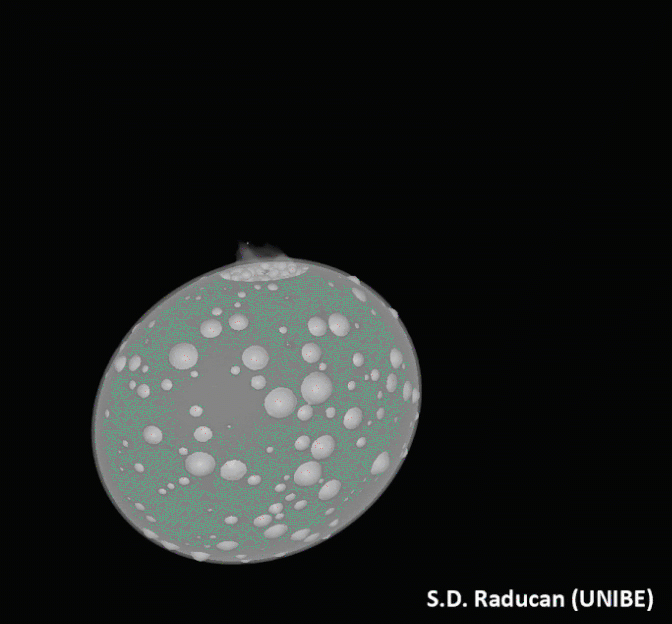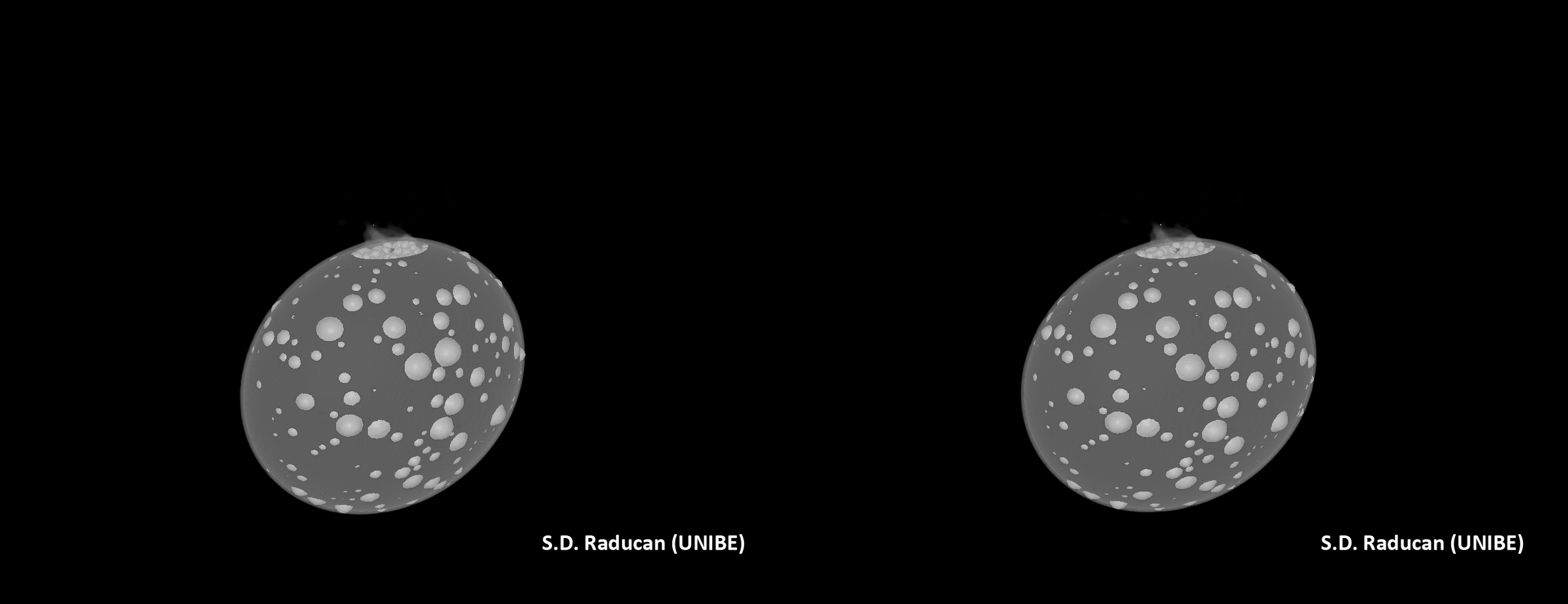
When NASA purposely crashed a spacecraft into a diminutive asteroid in 2022, the collision not only flung large boulders into space and changed the space rock’s orbit, but also transformed its shape.
The DART mission (short for Double Asteroid Redirection Test) smashed a 1,300-pound (600 kilogram) spacecraft into Dimorphos, a tiny moon of the larger asteroid Didymos, to test a technique to deflect any future Earth-hitting asteroids.
Within an hour of the crash – which can be likened to a vending machine hitting a football stadium – a sizable chunk of Dimorphos flung into space, its rubble-pile nature offering little resistance to escaping boulders. A bigger portion dislocated from the impact site and regrouped elsewhere on the asteroid. It “rounded” the previously oblate space rock and left behind little to no trace of the crater that would normally be prominent from such an event, researchers report in a paper published Feb. 26 in the journal Nature Astronomy, one of two studies released this week outlining the aftermath of the crash.
“We may be looking at what for all intents and purposes is a brand-new asteroid to our view,” says Tom Statler, DART program scientist at NASA, who was not involved with the new study.
‘A pile of sand’
DART likely crashed into a weak region of the asteroid where gravity is vanishingly low, “so basically the crater grew so much that it doesn’t look like a crater anymore,” says Sabina Raducan, a postdoctoral researcher at the University of Bern in Switzerland and the study’s lead author. Part of the 33-minute chop in Dimorphos’ orbit after DART’s impact would be due to this change in the asteroid’s shape, says Raducan.
To arrive at their conclusions, Raducan and her colleagues simulated DART’s impact using data from telescopes that had watched the crash real time, including the Hubble Space Telescope and the Italian LICIACube spacecraft. The simulation that best matched telescope observations revealed Dimorphos has barely any friction between its boulders, which explains why just 1% of its mass blasted into space and a whopping 8% to 9% rearranged itself elsewhere on the space rock.
“Dimorphos is more like a pile of sand,” says Raducan.
The second study, published Feb. 28 in the journal Nature, found the material blasted from Dimorphos was not uniform in nature. Rather, it was a mix of single and clustered boulders, dust grains, and other filamentary particles. Simulations based on images taken by the LICIACube spacecraft also show the material to be more abundant in the north-south direction than in the east-west, thanks to local curvatures on the asteroid’s surface.
Findings from both the new studies are consistent with a fast-rotating Didymos shedding surface material that then very weakly reaccumulated into Dimorphos, says Statler, who was also not involved with the second paper. Scientists now know that if such a double-asteroid system were ever on a collision course with Earth, they could successfully deflect the weaker natural satellite rather than the denser primary asteroid, which may not budge from its orbit to the same extent as its agglomerate moon.
Studies like these, which are among 60 papers submitted or published after the impact, are also helping scientists refine fundamental understanding of asteroids.
“The amount of basic knowledge that’s going to come out of this is going to be huge,” says Statler. Around 15% to 20% of the known asteroids are bound to a companion like the Didymos-Dimorphos system, so understanding Dimorphos’ formation, surface properties, and distribution of boulders “is relevant for basic understanding of asteroids as well as planetary defense,” he says.

A trip to Dimorphos
The Didymos-Dimorphos system is about 2.7 astronomical units (AU; 1 astronomical unit is equal to the average Earth-Sun distance of 93 million miles or 150 million kilometers) from Earth right now, meaning it is too far to be observed using ground-based telescopes. For a few days in June, astronomers expect to image the system every three minutes over many hours using the Southern Astrophysical Research (or SOAR) and Magellan telescopes in Chile, as well as the Las Cumbres and Lowell observatories in California and Arizona respectively. These pictures would capture dips in brightness of the system as one asteroid passes in front of its companion or casts a shadow on it, through which astronomers can determine the current orbital period of the two bodies and other changes in their dynamics following DART’s impact.
Cristina Thomas, who is the lead of the DART Observations Working Group at the Northern Arizona University, says the asteroid system would be very close to the galactic plane at the time and would thus be tricky to distinguish from a star-studded sky. “We definitely are going to have our work cut out for us when it comes to pulling the best quality data out of that,” she says.
Learnings from this observation campaign as well as ongoing studies from the now-completed DART mission will be passed on to scientists at the European Space Agency who are working on the upcoming Hera mission. Hera is scheduled to launch this October and arrive at the Didymos-Dimorphos system at the end of 2026, with a goal to study the mass, composition, and structure of Dimorphos. It could also determine if the space rock has really started wobbling back and forth after the impact, as subtle hints from the system seem to suggest.
Scientists are eager to see what the transformed Dimorphos really looks like. “There is the possibility now that we will not be able to recognize anything on Dimorphos,” says Statler. “Everything that we got a good view of from DART either got ejected or pushed aside.”









